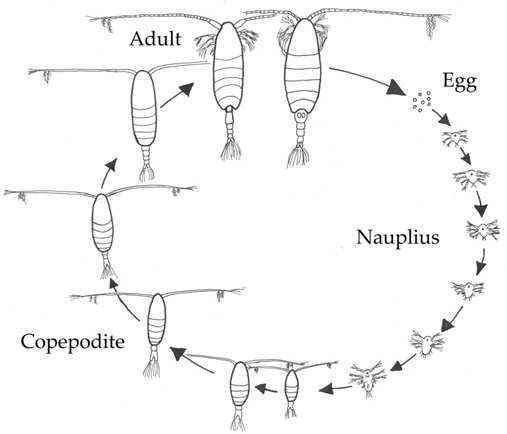Zooplankton form the link between primary production and higher trophic levels in pelagic ecosystems. In the Atlantic waters of the Norwegian and Barents Seas, the copepod Calanus finmarchicus is an important food source for both pelagic fish (e.g. herring and capelin), and larvae and juveniles of demersal fish (e.g. cod and haddock). In Kvile’s PhD dissertation, survey data with high spatial resolution and long timespan are analysed to understand how the dynamics of C. finmarchicus in the north-eastern Norwegian Sea and south-western Barents Sea are influenced by climatic variation. State-of-the-art statistical analyses and oceanographic particle tracking are combined to disentangle how temperature, currents, stratification, wind and food availability affect C. finmarchicus abundance, distribution and seasonality. Combining particle tracking and statistical analyses with simulations of copepod population dynamics, Kvile also aim to shed light on the beginning and end of the copepod life cycle, namely the spatiotemporal distribution of egg production and estimation of mortality rates.
Temperature effects on Calanus finmarchicus
In the first paper of the thesis, that was also the subject of a previous post, Kvile et al. show that abundances of C. finmarchicus developmental stages correlate differently to variation in ambient temperature, and that increased temperatures relate to earlier peak of the younger developmental stages in spring.
The mechanisms behind the climate effect on Calanus finmarchicus
In the second paper, Kvile et al. used particle tracking to map the environmental variation experienced by C. finmarchicus from spring to summer. A set of virtual “particles” representing zooplankton are released within the area of interest in the ocean model domain. It was then possible to track both their drift trajectories and the ambient environment experienced by the particles. The ocean model simulates flow fields (currents) and hydrography (e.g. temperature and salinity) based on climatological data. Using this technique Kvile et al explored the mechanisms (physical and biological) explaining the changes of C. finmarchicus biomass in summer.

Origin of the Barents Sea copepodites
In the third paper, particle tracking is once more used but this time to back-calculate the potential spatiotemporal distribution of spawning areas from observed C. finmarchicus copepodites in spring. This time survey data are coupled with drift modelling to map the distribution of C. finmarchicus spawning areas and timing, and thereby the connectivity between areas in the Norwegian Sea and the Barents Sea. Kvile et al. then shed light on the transport of copepodites prior to sampling and on their origin.
Estimate copepod mortality
In their fourth paper, Kvile et al. explore a statistical regression approach for mortality estimation. The method is robust to both advection and trends in recruitment.
In summary, Kvile’s thesis improved both our general knowledge of C. finmarchicus’ life-history in a high-latitude marine ecosystem, and the potential responses of this species to climate change. The three last papers are still in revision in high impact journals and will certainly be soon available to the scientific community. Look for them...
References
Kvile, K., Dalpadado, P., Orlova, E., Stenseth, N.C., & Stige, L. (2014). Temperature effects on Calanus finmarchicus vary in space, time and between developmental stages Marine Ecology Progress Series, 517, 85-104 DOI: 10.3354/meps11024
and submitted
Kvile, K.Ø., Langangen, Ø., Prokopchuk, I, Stenseth, N.C., Stige, L.C. Disentangling the mechanisms behind climate effects on zooplankton.
Kvile, K.Ø., Fiksen, Ø., Prokopchuk, I., Opdal, A.F.. Coupling a hydrodynamic model with biological survey data gives new insight into long-term variation in Calanus finmarchicus spawning areas.
Kvile, K.Ø., Stige, L.C., Prokopchuk, I., Langangen, Ø. A statistical regression approach to estimate copepod mortality from spatiotemporal survey data.

Log in to comment
Not UiO or Feide account?
Create a WebID account to comment